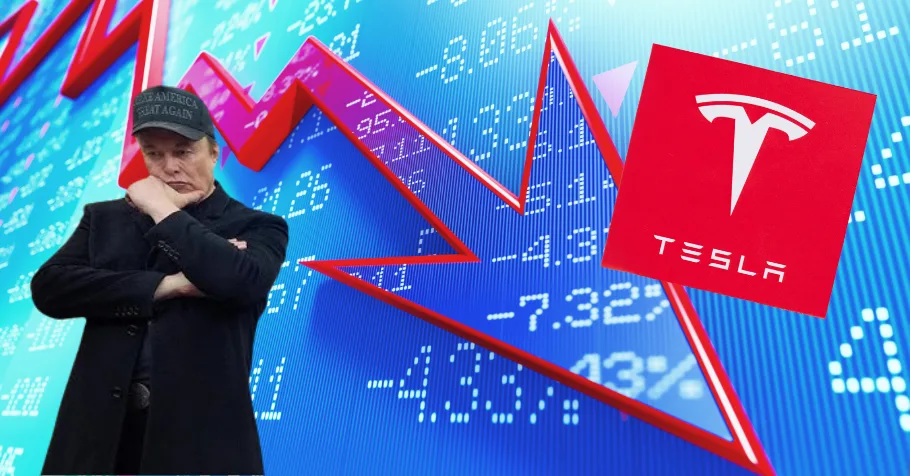Jamie Dimon Calls Out Green Economy Waste
In a candid interview with Bloomberg on May 15, 2025, JPMorgan Chase CEO Jamie Dimon warned that America has “wasted a lot of money in the green economy.” His comment wasn’t a one-off soundbite. It reflected growing concern among business leaders and policymakers about how taxpayer funds are being funneled into green initiatives that often fail to deliver meaningful returns—or worse, collapse entirely.
Dimon’s criticism highlights a deeper issue: the lack of cost discipline and measurable impact in many government-backed climate projects. “We’ve spent trillions and created very few long-term jobs,” he said, referencing the inflationary pressures and budget strain green policies can place on the broader economy.
While the push toward clean energy is rooted in sound long-term goals, Dimon’s remarks invite a tough but necessary question: How much of this transition has actually created durable value?
High-Profile Failures in the Green Economy
Dimon’s skepticism is not unfounded. Several major projects backed by government funds have turned into cautionary tales of overpromising and underdelivering:
1. Solyndra – $528 Million Lost
Solyndra received over $500 million in U.S. federal loan guarantees during the Obama administration. Once hailed as a breakthrough in solar innovation, the company filed for bankruptcy in 2011, leaving taxpayers on the hook. Investigations later revealed executives misled officials about the company’s financial health.
2. Crescent Dunes Solar Project – $737 Million in Trouble
Backed by a $737 million loan, Nevada’s Crescent Dunes promised to deliver on large-scale solar with molten salt technology. Instead, the plant suffered mechanical failures and ultimately defaulted on its loans. It hasn’t produced power since 2019.
3. Ivanpah Solar Facility – $1.6 Billion Burned
Once touted as a flagship clean energy project, the Ivanpah plant in California cost $1.6 billion in federal support and never hit performance targets. It relied on natural gas just to keep the system running. In early 2025, Pacific Gas & Electric terminated its power purchase agreement, marking a near-death blow.
4. Abengoa – Corporate Collapse
Spanish green giant Abengoa filed for insolvency in 2021 after years of overexpansion and poor financial management, despite backing from international governments and climate finance agencies.
These examples give weight to Dimon’s criticism—evidence that government-backed green energy spending can quickly spiral into waste when not paired with accountability and business sense.
Trump’s Green Regulation Rollbacks—and the Few He Supports
President Donald Trump has long taken a skeptical stance on green energy mandates and climate regulations, especially those he believes hurt American jobs or economic competitiveness.
Rollbacks from Trump’s Administrations
Here are some of the most notable actions from his first and current administrations:
- Clean Water Rule Repeal: Trump rescinded the 2015 Obama-era regulation that extended Clean Water Act protections to smaller waterways. (EPA summary)
- Energy Efficiency Rollbacks: Trump’s Department of Energy moved to scale back efficiency standards on appliances, arguing it imposed unnecessary costs on manufacturers.
- PFAS Water Limits: His EPA dialed back regulations on “forever chemicals” in drinking water, a move that drew criticism from health advocates.
- Federal Land Solar & Wind Fee Cuts Reversed: Trump eliminated a Biden-era rule that cut fees for clean energy projects on federal land, claiming it gave green energy an unfair advantage.
- Endangered Species Act Reforms: Trump made it harder to list new species as endangered, often citing energy development needs.
What Trump Actually Supports
Despite his deregulatory agenda, President Trump hasn’t rejected all green initiatives:
- Energy Star Program: He did not cancel this energy efficiency labeling program, which helps consumers identify cost-saving appliances.
- Streamlined Permitting: Trump has praised faster environmental reviews for energy and infrastructure projects. His argument: green energy shouldn’t get a free pass, but red tape should be cut across the board—for both renewables and traditional fuels.
- Nuclear and Natural Gas: Trump has voiced support for nuclear energy and natural gas as “clean” alternatives, especially in reducing dependency on foreign oil.
Investor Takeaways: Profit From the Pivot
So what does all this mean for investors? Whether you support or oppose green regulation, the policy environment is shifting—and investors who pay attention can profit from the changes.
1. Follow the Regulatory Tailwind
When the government pours billions into a sector, winners emerge. Even amid waste, smart companies—especially those in battery storage, grid infrastructure, or nuclear—can benefit from targeted support. Look at firms with real revenue, not just hype.
2. Bet on Deregulation Plays
Trump’s continued rollback of restrictive green mandates favors traditional energy, infrastructure, and industrial sectors. Oil and gas stocks, especially those with strong U.S. footprints, stand to benefit.
3. Avoid Green Bubble Risk
Dimon’s warning signals caution. Avoid overvalued green tech startups dependent on subsidies. Instead, seek firms with diversified portfolios, proven profitability, and exposure to both clean and traditional energy markets.
4. Real Estate & Utilities
States loosening green energy mandates could see lower compliance costs. Utility stocks in red states may outperform as capital requirements drop. Likewise, commercial real estate firms not tied to LEED certification standards may find renewed margins.
5. Keep an Eye on Washington
Elections matter. If Trump wins a second full term, expect accelerated deregulation. If Democrats regain power, subsidies and ESG mandates could return in force. Your portfolio should reflect those potential pivots.
Investor Takeaways: Profit From the Pivot
So what does all this mean for investors? Whether you’re skeptical of green regulations or see opportunity in energy disruption, the policy environment is changing—and money will follow the shift.
Here’s how to position your portfolio.
1. Go for Proven, Profitable Energy Plays
Jamie Dimon’s warning about green spending waste reinforces a trend: speculative green tech is struggling. Investors should instead prioritize established players with real assets and strong balance sheets.
✅ ExxonMobil (XOM)
Despite political pressure, Exxon continues to rake in profits. With Trump rolling back green regulations and boosting domestic production, oil majors like Exxon stand to benefit.
✅ Schlumberger (SLB)
This oilfield services company benefits from increased U.S. drilling, especially if permitting rules are relaxed further.
✅ NextEra Energy (NEE)
While traditionally seen as a renewable energy utility, NextEra also owns Florida Power & Light—a major regulated utility. Its hybrid exposure could benefit from both subsidy-driven growth and deregulation tailwinds.
2. Revisit Nuclear—The Underrated Clean Energy Play
Trump has previously supported nuclear as a reliable, clean energy source. While ignored for years, nuclear is seeing a quiet resurgence.
✅ Cameco (CCJ)
A top uranium producer based in Canada. With rising global interest in small modular reactors (SMRs), demand for uranium is set to grow.
✅ BWX Technologies (BWXT)
This U.S.-based company supplies nuclear components for the Navy and is investing in advanced reactor designs. It’s a stealth play on both defense and energy.
3. Traditional Utilities in Red States
Red-state utilities benefit from fewer green mandates, translating to lower capex requirements and better margins.
✅ Entergy Corporation (ETR)
A major utility across Arkansas, Mississippi, and Louisiana. Less ESG pressure means more operational flexibility.
✅ Vistra Corp. (VST)
A power producer operating fossil fuel and nuclear plants—benefiting from deregulated markets and capacity pricing.
4. Infrastructure & Construction
If Trump accelerates permitting and cuts red tape for industrial projects, infrastructure stocks could soar.
✅ Caterpillar (CAT)
The go-to name in construction and mining equipment. Permitting reform would supercharge demand.
✅ Martin Marietta Materials (MLM)
A leading provider of aggregates and heavy construction materials, tied to domestic infrastructure growth.
5. Avoid Overhyped Green Startups
Steer clear of speculative green stocks that rely on continued federal subsidies to survive.
⚠️ Plug Power (PLUG) and Lucid Motors (LCID)
Both companies have strong narratives but shaky fundamentals. If Trump continues removing subsidies, their business models could struggle.
Follow the Policy, Not the Politics
Markets don’t care about virtue signals—they care about earnings. And right now, the winds are shifting.
Jamie Dimon’s comments are a signal to stop blindly chasing ESG fads and start analyzing real returns. Combine that with Trump’s deregulatory push, and the smart money will look to traditional energy, nuclear, and resilient infrastructure.





